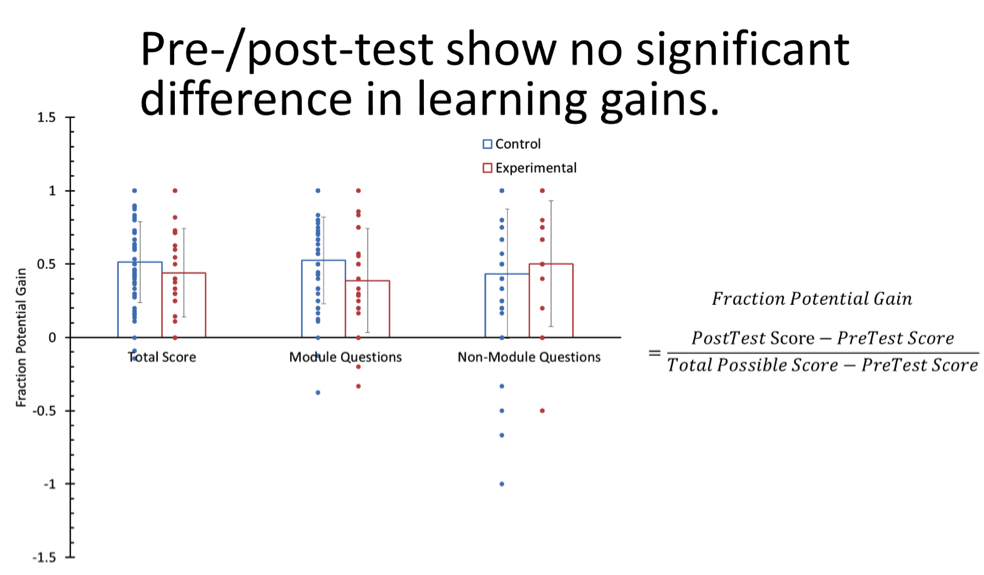Table Of Content

Pregnant women from three local churches were recruited by active church health teams (CHTs) in three respective communities in Enugu State, Southeast Nigeria. In 2013, the HBI was deployed in 40 communities in Enugu, where our team has a history of working with religious leaders [23, 26]. Some authors suggest this should occur before marriage [13, 14] but others noted that the importance of pre-marital knowledge is invalidated by the observation that some intending couples do not implement the knowledge during marriage [15]. Considering this challenge, some authors have advocated that this should be done during adolescence to provide information early enough to make marital/procreation decisions [16].
SCD and NBS education guide
We termed them the average-based change approach (ABC) and the individual-based change approach (IBC). The aim of ABC is to evaluate whether a group, as a whole, experienced a reliable change. In turn, the goal of IBC is to identify specific individuals who showed change. To assess ABC, researchers often use a statistic that describes the center of the distributions (often, the pre and post means), by using null hypothesis tests and effect size measures (c.f., Cohen, 1988; Fritz et al., 2012; Grissom and Kim, 2012; Pek and Flora, 2018).
Best programs
QEDs test causal hypotheses but, in lieu of fully randomized assignment of the intervention, seek to define a comparison group or time period that reflects the counter-factual (i.e., outcomes if the intervention had not been implemented) (43). QEDs seek to identify a comparison group or time period that is as similar as possible to the treatment group or time period in terms of baseline (pre-intervention) characteristics. QEDs can include partial randomization such as in stepped wedge designs (SWD) when there is pre-determined (and non-random) stratification of sites, but the order in which sites within each strata receive the intervention is assigned randomly. For example, strata that are determined by size or perceived ease of implementation may be assigned to receive the intervention first. However, within those strata the specific sites themselves are randomly selected to receive the intervention across the time intervals included in the study). In all cases, the key threat to internal validity of QEDs is a lack of similarity between the comparison and intervention groups or time periods due to differences in characteristics of the people, sites, or time periods involved.
(PDF) Conceptual understanding of pressure concept through problem based learning in junior high school grade 8 th - ResearchGate
(PDF) Conceptual understanding of pressure concept through problem based learning in junior high school grade 8 th.
Posted: Sat, 23 May 2020 07:00:00 GMT [source]
University of California - San Diego
This can be challenging as there may not be adequate information available to determine how ‘equivalent’ the comparison group is regarding relevant covariates. The quadratic and cubic functions achieved a slightly better fit than the linear function, but only with negative skewness; the logistic and linear functions achieved similar fit. As in the single group design, the linear function was deemed preferable because it is the most parsimonious, with only minimal loss of fit. To identify which individual scores showed a reliable change (i.e., which cases fell above a certain cutoff after being standardized) and then calculate the percentage of individual changes for each sample, we decided to use two individual change indices. We chose two indices that have shown lowest false negative rates (see Ferrer and Pardo, 2014). As an example, a study in Greece looked at the effect of providing meals in schools on household food security.[6] The 51 schools in this study were randomly allocated to provide or not provide a healthy meal every day to students; schools in both the groups provided an educational intervention.
(PDF) pre-experimental study to assess the effectiveness of structured teaching programme on knowledge regarding ... - ResearchGate
(PDF) pre-experimental study to assess the effectiveness of structured teaching programme on knowledge regarding ....
Posted: Fri, 18 Feb 2022 08:00:00 GMT [source]
The demographic information of a participant was only filled in during the post-test test of the last case, and the analysis considered participants who finished all four VP cases. Each case was assessed depending on the answers to the paper case, where 0 was the minimum score, and 15 was the maximum score per paper case. After data collection, all answer sheets from the participants were made into an extra copy to allow the awarding of scores by two different nurses per paper case. Since all questions were open-ended, interpreting the answers differently was possible.
As well, when a complex intervention is related to a policy or guideline shift and implementation requires logistical adjustments (such as phased roll-outs to embed the intervention or to train staff), QEDs more truly mimic real world constraints. As a result, capturing processes of implementation are critical as they can describe important variation in uptake, informing interpretation of the findings for external validity. However, QEDs are often conducted by teams with strong interests in adapting the intervention or ‘learning by doing’, which can limit interpretation of findings if not planned into the design. As done in the study by Bailet et al (3), the investigators refined intervention, based on year 1 data, and then applied in years 2–3, at this later time collecting additional data on training and measurement fidelity. This phasing aspect of implementation generates a tension between protocolizing interventions and adapting them as they go along. When this is the case, additional designs for the intervention roll-out, such as adaptive or hybrid designs can also be considered.
What is a Sampling Distribution?
According to the Ministry of Health in Rwanda, 85% of the burden of disease is addressed at the primary health care level, including community, health posts, and health centers [2]. At this healthcare system level, nurses use diagnosis procedures traditionally applied by physicians to assess and manage diseases, exposing them to risks for diagnostic errors. Nurses are responsible and accountable for patient care and work to their full potential without supervision at the health center. Stepped wedge designs (SWDs) involve a sequential roll-out of an intervention to participants (individuals or clusters) over several distinct time periods (5, 7, 22, 24, 29, 30, 38). SWDs can include cohort designs (with the same individuals in each cluster in the pre and post intervention steps), and repeated cross-sectional designs (with different individuals in each cluster in the pre and post intervention steps) (7).
Traditional RCTs strongly prioritize internal validity over external validity by employing strict eligibility criteria and rigorous data collection methods. Pre-post studies are valuable tools for evaluating how interventions affect outcomes over time, and can be applied across many different clinical research settings. They are generally less costly and simpler to implement than RCTs, and can also be feasible with relatively smaller sample sizes. Further, pre post studies have other unique benefits that make them preferable in certain circumstances. This study aimed to determine the feasibility of using CPD through VP cases to improve nurses' clinical reasoning in primary health care.
In the SWD, there is a unidirectional, sequential roll- out of an intervention to clusters (or individuals) that occurs over different time periods. Initially all clusters (or individuals) are unexposed to the intervention, and then at regular intervals, selected clusters cross over (or ‘step’) into a time period where they receive the intervention [Figure 3 here]. All clusters receive the intervention by the last time interval (although not all individuals within clusters necessarily receive the intervention). Data is collected on all clusters such that they each contribute data during both control and intervention time periods. The order in which clusters receive the intervention can be assigned randomly or using some other approach when randomization is not possible. For example, in settings with geographically remote or difficult-to-access populations, a non-random order can maximize efficiency with respect to logistical considerations.

This course is intended for experienced software developers who wish to expand and refine their knowledge of advanced object-oriented design. The participant started with the first page and was given the next page after he/she had submitted the previous page. The participants were not allowed to go back and change answers on the previous page(s). The research team and experts also developed a list of possible answers to each question asked, used for the subsequent correction of the paper cases. EE, EF, and AP analyzed the data and interpreted the results, organized the article structure and drafted the manuscript critically revised the manuscript.
By using a pretest, a control group, and random assignment, this design controls all internal threats to validity. Pre-Post Test Designs are flexible; and can be used across non-experimental, experimental and quasi-experimental research settings. While it has a treatment group, it may or may not include a control group (Zach, 2020).

Statistical analysis methods include finding the mean, median, standard deviation, variance, reliability, and validity. Paired t-tests can be employed to determine statistical significance in the pretest and posttest scores of the participants. In particular, the Solomon four-group pretest-posttest design requires a high degree of statistical calculation because it has four groups instead of two. If a Solomon four-group design is desired, a meta-analysis may need to be conducted. A pretest is an assessment measure given to participants before they have undergone some type of treatment as part of a research study. A posttest is an assessment measure given to participants after they have received treatment as part of a research study.
A convenience sample of 90 pregnant women who indicated interest in the HBI were invited to participate in this study. The inclusion criteria were women aged 15–49 years in their second or third trimester of pregnancy who attended the selected churches [31], and had working contact phone numbers. For all conditions in both designs, the properties of the generated samples corresponded to those imposed in the simulation. We report the results regarding SID only; those based on the RCI are similar. You collect your participants and give them a series of tests that will measure their judgment and general knowledge. For example, you may look at their ability to discern when it would be a good time to pull out into traffic as a measure of judgment.
On the day of the baby shower, the CHTs convened the pregnant women for the program. Using the education guide, educational sessions at each of the three churches were delivered by a team led by either a hematologist or a program manager. All team leads have experience in running over 100 baby showers for funded research studies between 2013 and 2019 [27, 28, 31, 32]. The education session with questions and answers lasted approximately 30–45 min. In addition, during the baby showers the CHTs took basic health measurements including height, weight, and blood pressure. Hb genotype screening was conducted using HemoTypeSC™ rapid test with on-the-spot results delivered to the participants.
The longer the time lapse is between the pretest and the posttest, the higher the risk is for history to bias the study. A pretest-posttest design is an experiment in which measurements are taken on individuals both before and after they’re involved in some treatment. There were approximately 141 design & applied arts students who graduated with this degree at CSULB in the most recent data year. Degree recipients from the design & applied arts major at California State University - Long Beach earn $8,089 above the typical graduate with the same degree shortly after graduation. There were about 129 design & applied arts students who graduated with this degree at Otis College of Art and Design in the most recent year we have data available.

No comments:
Post a Comment